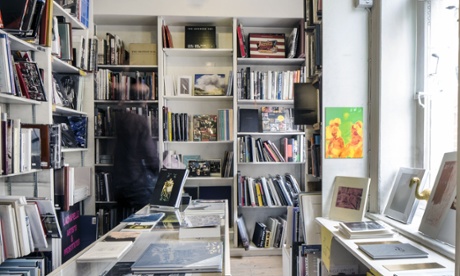
Every so often a stack of reading matter lands on my desk. There is my monthly copy of Vogue and the weekend newspapers with their style supplements but there is not, and in my view never will be, any substitute for a proper lush doorstop of actual physical books. The pleasure of the page and immersion into a world of unimagined texture and richness simply doesn’t happen for me on a computer screen. I like to mark pages with sticky notes, flick through and refer back (frequently), and occasionally balance a TV supper on one. I’ve just moved house and the Invisible Woman library took up an entire additional truck. Without books around me I am deeply unhappy. I line my home with paper, like a bookish wasp.
Books about fashion, like any other book, seduce with the cover. The right kind of fashion book throws up all kinds of hidden connections and smacks you right in the left-brain synapse . But more often than with other books they turn out to be disappointingly lightweight.
A book called Vintage Fashion Complete will always prompt the arch response, “I’ll be the judge of that.” But Nicky Albrechtsen’s book is pretty much exactly that. The point of the book is to make you think about vintage in terms of form and style, to see past rigid chronology with its taint of fancy dress to what lies at the heart of good dressing – personal style. By dividing the book into three sections: Decades, Elements and Hallmarks, Albrechtsen opens a window on howgood ideas skip the years to fertilise a future designer’s imagination. Halfway through, I came face to face with Mr Pants (“There is only one”), the brand behind the hideous and horrible stretch jersey stirrup pants I accidentally-on-purpose scorched with an iron so I wouldn’t have to wear again. If the author has left anything out of this comprehensive guide to the anatomy of vintage fashion then I’ve no idea what it might be.
If you’ve ever wondered about the eye-watering price tag of haute couture (and who hasn’t), or lamented the disposable world we live in then I wholeheartedly recommend Haute Couture Ateliers: The Artisans of Fashion to restore your faith in human endeavour. This book is so delicious I wanted to eat it. The photographs of beading, feathering, embroidering, weaving, pleating, passementerie, even fans, costume jewellery and perfume made my mouth water. Some time ago, I read about a mother who, during wartime rationing, painstakingly removed all the buckram from any books she could lay her hands on until she had enough to make her small daughter a fairy costume.
This book gave me the same sense of wonder and admiration. The work involved in creating silk flowers for example, or cutting feathers to construct something like Jean Paul Gaultier’s Parakeet bolero is truly jaw-dropping. That new technology is being incorporated into these centuries old crafts - 3D printing, siliconiSed thread - is heartening, more so that they only take what they can use, leaving anything that might taint the purity of their art. What I learned from the author, Hélène Farnault, is that beautiful, clever things have a currency of their own and that their value must never be underestimated. Wearing something that no one else has, whether it’s sweated over in Paris or stitched by you in Bradford, is what sets us apart. Making or owning something uniquely beautiful is one of life’s enhancers.
Finally, there is Asian Street Fashion, a book in a similar vein to The Sartorialist in that it comprises photographs of stylish individuals snapped in the street. This is the book I read first and liked least. James Bent’s book didn’t work for me as a style reference and only really came alive after chapter seven - traditional dress with a twist. There are some interesting ideas and concepts from this point on, but it was disappointing not to see any older people in there, although Bent does say that in South Korea, for example , people were reluctant to have their photographs taken. To my mind, his book suffers as a result.

